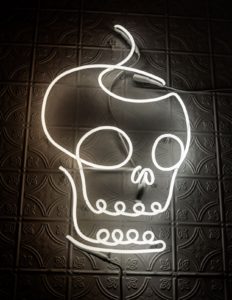
My bad! I’d meant the stele to be the Last Archaeological Thing, but I completely forgot about the tumi! There’s no way I can leave that off, especially with Halloween tonight!
A tumi is named for the Quecha word for “knife” and refers to the half-moon bladed knives used by the Pre-Columbian people of the Peruvian Andes. They were used as kitchen knives and tools, also for medical procedures and sacrifices, and also as ceremonial implements. They are most commonly associated with Pre-Incan or Incan cultures. Many were elaborately decorated with semi-precious stones and made of metals too soft to hold an edge for long. Many were found in graves. The ones used as tools were less ornate, measured almost 17 inches long, and weighed over two pounds.
Ceremonial uses included the sacrifice of a white or black llama by the High Priest at the annual Sun Festival, to open the belly, pull out the entrails, and use these as a way to predict the future. Human sacrifices are also depicted in paintings. These tumi were ornate and often featured a “bird-man” figure of Naylamp, the founder of the Sican culture, who eventually flew into the sky.
They were used in trephination, which involved drilling a hole in the skull, perhaps to cure madness or seizures. Once can imagine a high mortality rate resulted, but there are some skulls which showed evidence of healing, so at least a few people survived it! Today, a trephination is a stop-gap measure for an elevated intracranial pressure.
The tumi is the national symbol of Peru, and to hang one on the wall brings good luck. A tumi is often featured in tourist trinkets like keychains, but here’s a link to the real deal:
https://en.wikipedia.org/wiki/Tumi#/media/File:Ceremonial_Knife_(Tumi).jpg
Happy Halloween!
Recent Comments